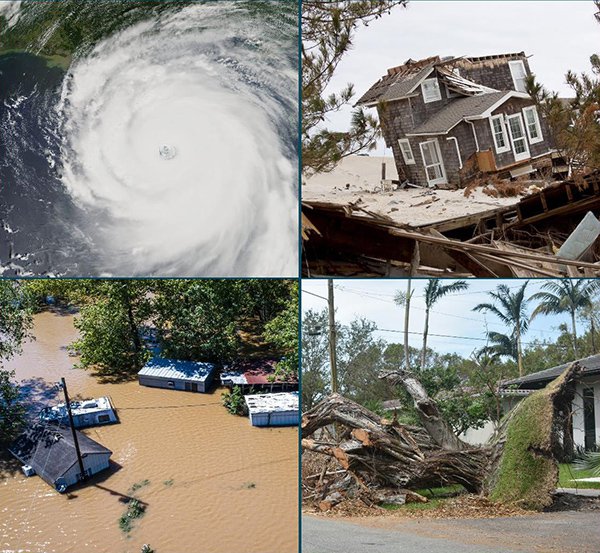FOR IMMEDIATE RELEASE
Built Environment Exacerbating COVID-19 Pandemic, Researchers Say

NHERI-affiliated team reveals that pandemic challenges identify a needed shift in engineering research.
West Lafayette, IN, Jan. 20, 2021 As communities across the United States struggle to manage a wave of COVID-19 infections, a multidisciplinary team of researchers argue that the pandemic has revealed the ways in which engineered structures and services have contributed to societys challenges. They subsequently posit that the built environment including both engineered structures and services (ESS) cannot be ignored when developing long-term pandemic mitigation.
In an article recently published in The Journal of Critical Infrastructure Policy, a team led by David Mendonca, a professor of industrial and systems engineering at Rensselaer Polytechnic Institute, earnestly asks engineers and social scientists to re-examine the models, data collection methods, and assumptions that their research is currently built upon.
In this project, we intend to examine the current state of preparedness in the U.S. in regard to the interaction of multiple hazards during a pandemic specifically within the scope of the NSF-funded Natural Hazards Engineering Research Infrastructure (NHERI) grant, said Julio Ramirez, project co-PI and director of the NHERI Network Coordination Office. The second edition of NHERIs Five-Year Science Plan covers both the scope and the process of conducting multi-hazard research for improving civil infrastructure and serves as a solid foundation to examine the resilience of ESS under the additional stress of pandemics such as COVID-19.
The researchers lay out several case studies that demonstrate how engineered structures and services in jails, nursing homes, and within the food supply chain have, in many ways, accelerated the spread of COVID-19 and related difficulties.
For instance, the authors highlight the high rate of COVID-19 infections within densely populated facilities, such as prisons and nursing homes, engineered to house people as efficiently as possible. This type of design leaves certain populations at greater health risk.
The COVID-19 crisis suggests that engineering ought to have a prominent voice in this discussion, the authors wrote. After all, the work of engineers is fundamentally concerned with the organization of space and time in order to serve people and it is precisely this organization which strongly determines the spread of pandemics.

In another case study, the authors highlight the reality that even as the need for food assistance sharply increased, the supply chain struggled to deliver because restaurants that the system relied on had closed or significantly reduced demand. In this example, Mendonca said, highly centralized systems aimed solely at efficiency and cost reduction couldnt pivot to meet a changing need.
We designed the supply chain, then we refined the design, which means we identified and eliminated inefficiencies, and we ended up with systems that are brittle, Mendonca said. So, you get a catastrophic event, and you get catastrophic failure.
The researchers also explore how the adaptation that the pandemic forced upon society calls into question traditional definitions of criticality. For instance, Mendonca said, office buildings and schools that were built specifically for work and education have become at times insignificant, as the critical functions they were designed for have been shifted to peoples private homes. That change, the researchers argue, requires the definition of critical to evolve.
We have to look at criticality much more broadly and say: What does society need in order to function? Thats a much different question than: What does business need in order to function? Mendonca said.
This work is supported by a National Science Foundation grant aimed at studying the ways in which the built environment mitigates or exacerbates the pandemic. Through case study data, the researchers will continue to examine those realities in relation to pandemic joint hazards. The goal is to help inform future research on the design and operation of the built environment.
Media Contacts:
Reeve Hamilton
Director of Media Relations and Communications
Rensselaer Polytechnic Institute
hamilr5@rpi.edu
Marti LaChance
Communications Manager
NHERI NCO
nheri.communications@gmail.com
About Rensselaer Polytechnic Institute
Founded in 1824, Rensselaer Polytechnic Institute is Americas first technological research university. Rensselaer encompasses five schools, 32 research centers, more than 145 academic programs, and a dynamic community made up of more than 7,600 students and more than 100,000 living alumni. Rensselaer faculty and alumni include more than 145 National Academy members, six members of the National Inventors Hall of Fame, six National Medal of Technology winners, five National Medal of Science winners, and a Nobel Prize winner in Physics. With nearly 200 years of experience advancing scientific and technological knowledge, Rensselaer remains focused on addressing global challenges with a spirit of ingenuity and collaboration.
About the Natural Hazards Engineering Research Infrastructure
Funded by the National Science Foundation, the Natural Hazards Engineering Research Infrastructure, NHERI, is a network of experimental facilities dedicated to reducing damage and loss-of-life due to natural hazards such as earthquakes, landslides, windstorms, and tsunamis and storm surge. It is supported by the DesignSafe Cyberinfrastructure. NHERI provides the natural hazards engineering and social science communities with the state-of-the-art resources needed to meet the research challenges of the 21st century. NHERI is supported by multiple awards from NSF, including the Network Coordination Office, Award #1612144.







